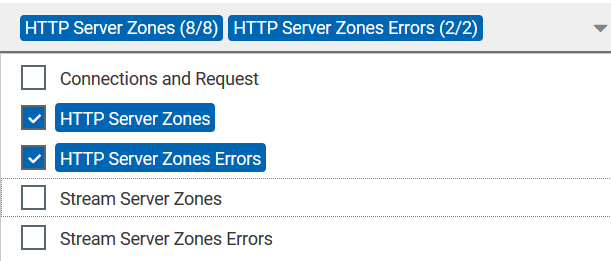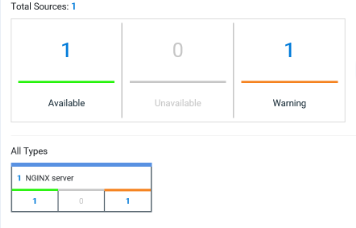Monitoring an NGINX server
To monitor an NGINX server, you must add the NGINX server source to Rational® Test Automation Server. To use, enter connection settings and select the counters that are used to capture the monitoring usage data.
Before you begin
You must have logged in Rational® Test Automation Server and be the owner of an existing new project.
If you monitor a remote host, it must be connected with the computer that you use to access resource monitoring. See Resource monitoring agents.
You can optionally use agents.
About this task
This task applies to NGINX and NGINX Plus.
If you use an agent to connect
Procedure
-
Click .
The resource monitoring page opens.
- In the resource monitoring page, click Add a Source and select Add an NGINX server....
-
Fill in the following connection settings in the
New server dialog box:
-
Select and save the statistics counters to monitor the source. You can select
them from the list where they follow the server logical organization.
For a faster selection, select the counters from the built-in sets drop-down list where they are organized by theme and save your selection.
 Note:For Docker host, you can select different sets of counters.
Note:For Docker host, you can select different sets of counters.- The first level of counters: Generic counters that are related to a Docker Image and all its running Docker Containers (in an exit, running or paused, created, restarted, removing, dead or transitive state).
- The second level of counters: Specific counters that are related to the existing Docker Containers.
Results
When the selected counters are saved, two tables are displayed in the resource monitoring main page. They contain the total number of sources you have added and the number of sources ordered by type.
